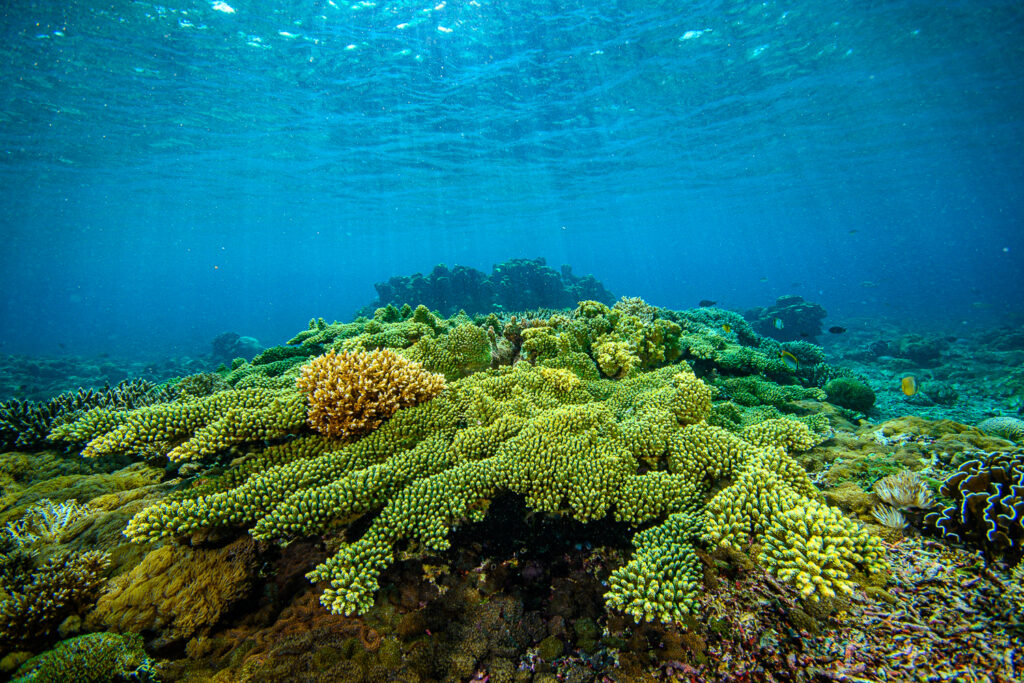
A Classic:
Acropora florida is a classic species within the aquarium industry. There are so many shapes and color variants within the “species.” However, the species is way more complex than we think, and what we generally consider to be A. florida likely represents a complex of many different species. The type specimen of Acropora florida is originally from Fiji. It has a heavily branched form. And, scientists suspect that it’s probably only found around Fiji and nowhere else.
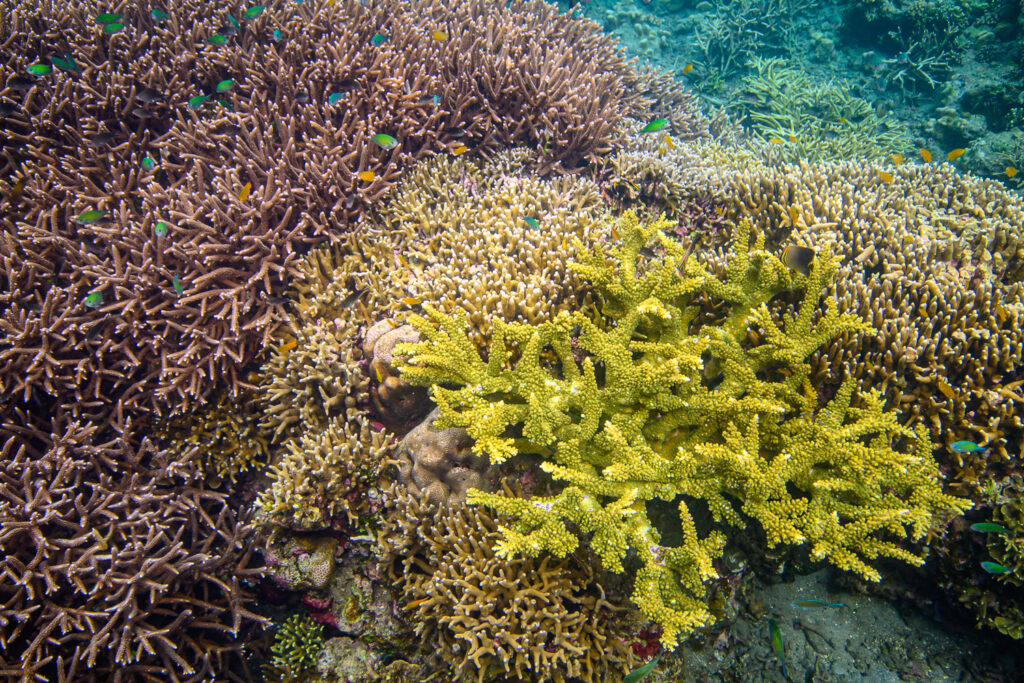
A Species Complex:
Diving in the south of Bali, we noticed many different shapes and colors morph of “Acropora Florida“. Within these corals, there is a broad diversity of colony shapes. They range from thick, upright branching, to fused, horizontal, thick, almost plating, and anything between these extremes. The coloration is also quite variable, anything from bright metallic green to dark brown, often with the characteristic orange tip axial corallite.
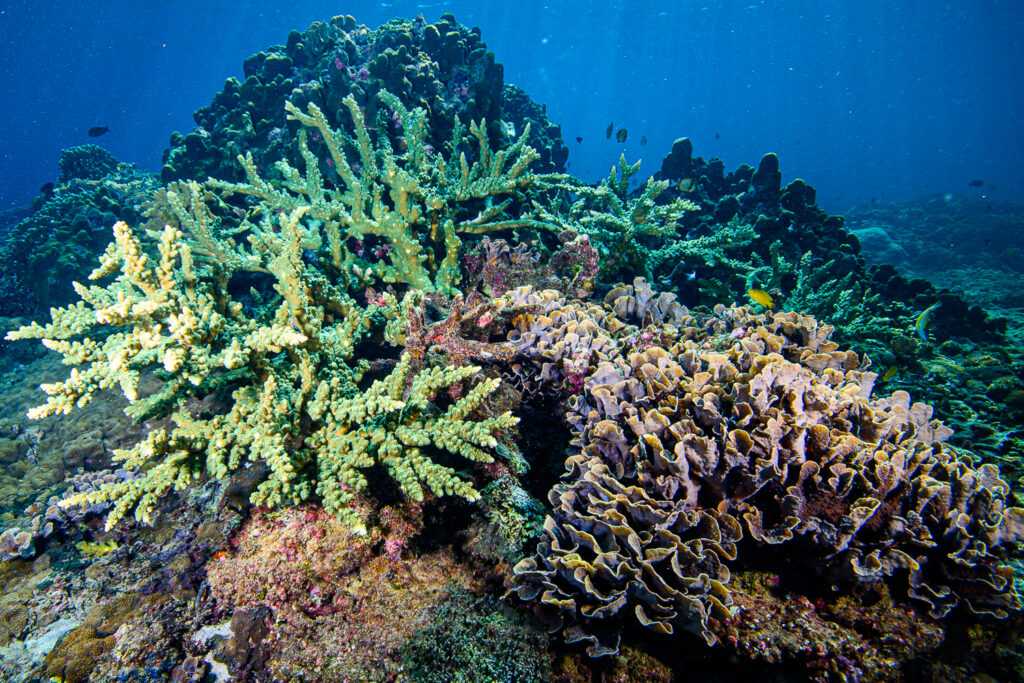
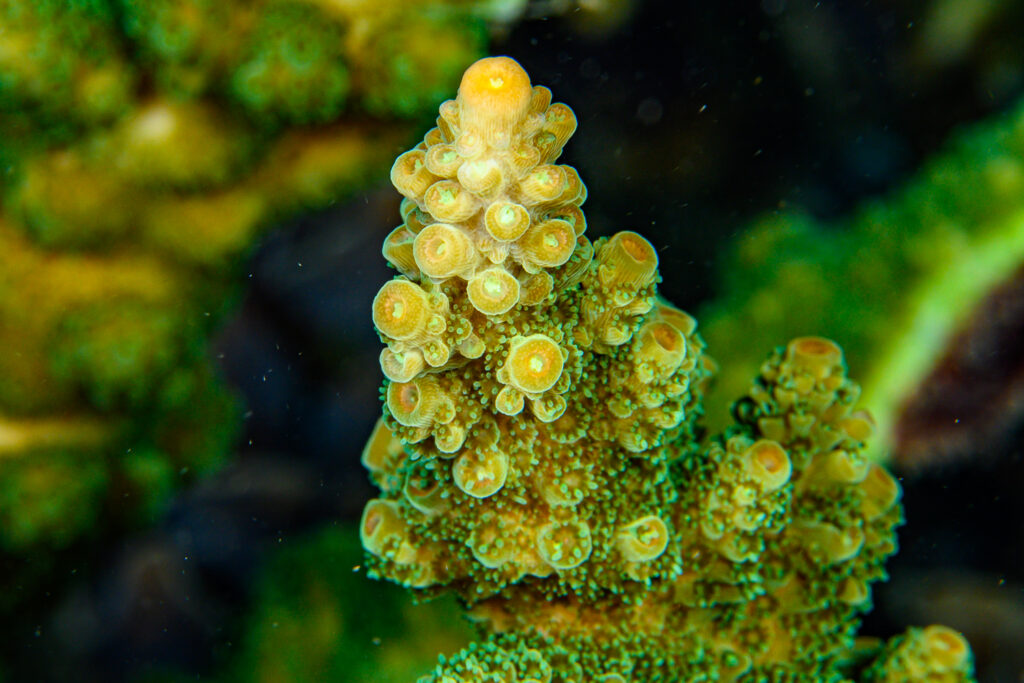
Diving along the shallow reef where these images were captured, we were amazed by the diversity of “Acropora florida” we could find at the same depth on the same reef, within just a few feet from each other.
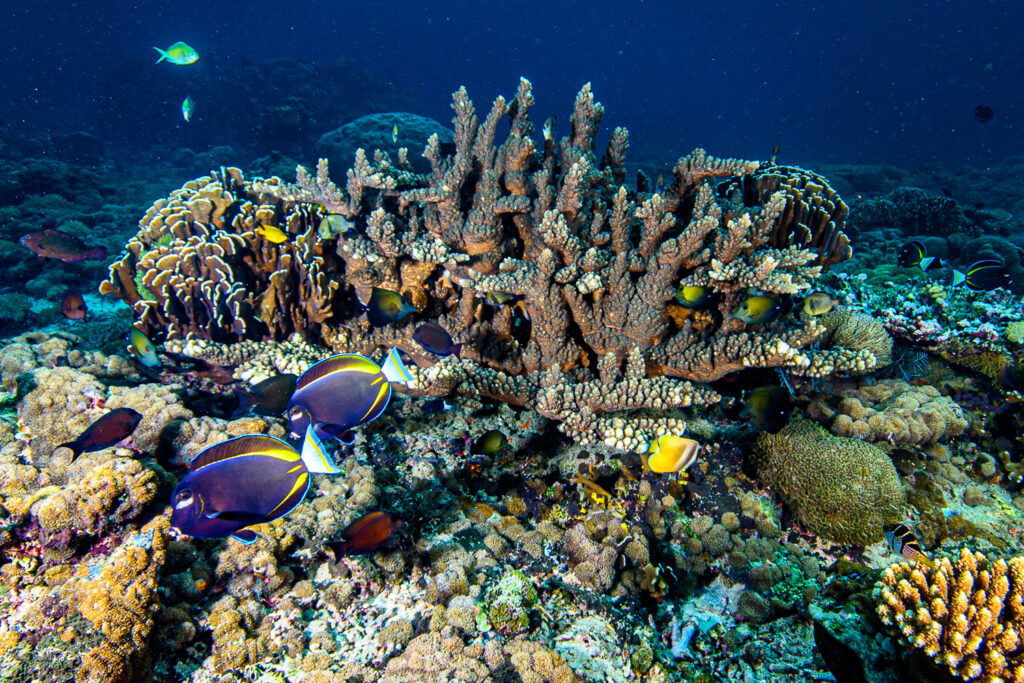
A very important shallow water species:
The corals forming this suspected species complex prefer shallow, moderately exposed reefs, sometimes in turbid areas.
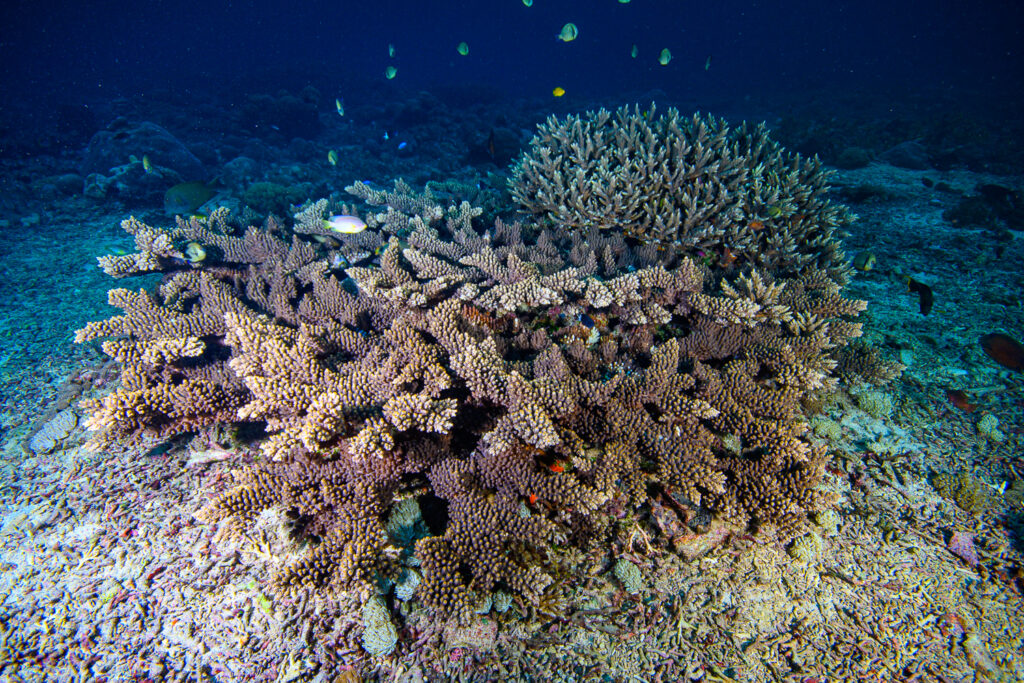
The forms seen here have thick, solid, flattened, layered branches, which are critical to life on a very shallow reef. Because they are very sturdy, they can afford to stick out of the reef and absorb a lot of the ocean’s energy. In this manner, these corals also protect the other surrounding species at the same time.
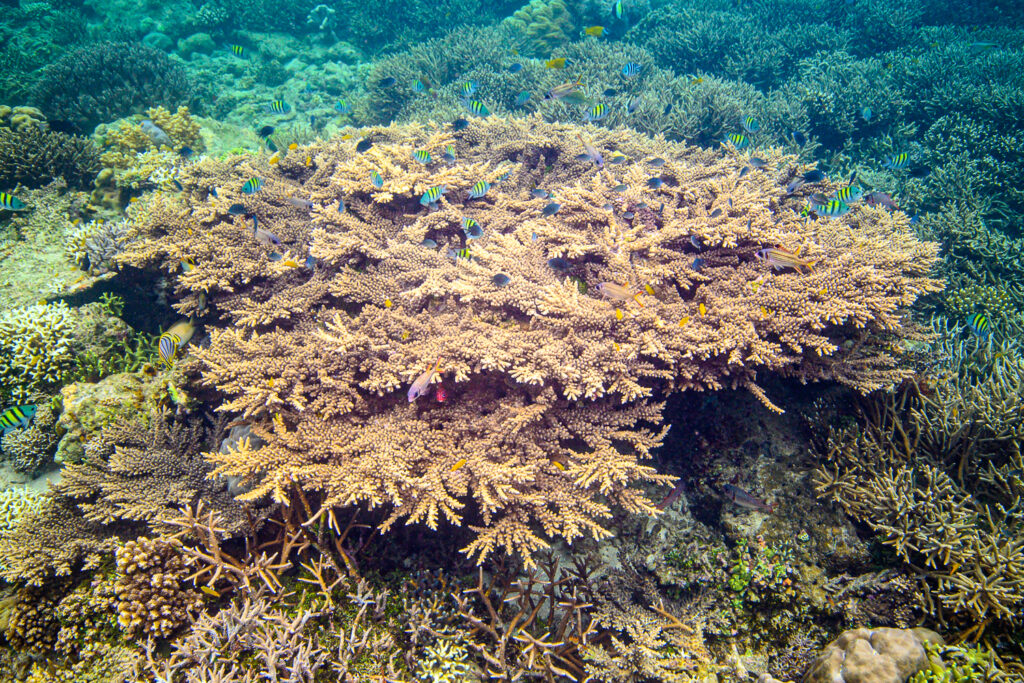
These corals also provide very important fish habitat. Unlike many thin-branching species, which are perfect for very small species and juvenile fish, the members of this “Acropora florida” complex have larger openings and shelter bigger fishes. Residents of these interstices often include predators like small groupers, as well as larger schooling fishes such as squirrelfishes, and often cardinalfishes.
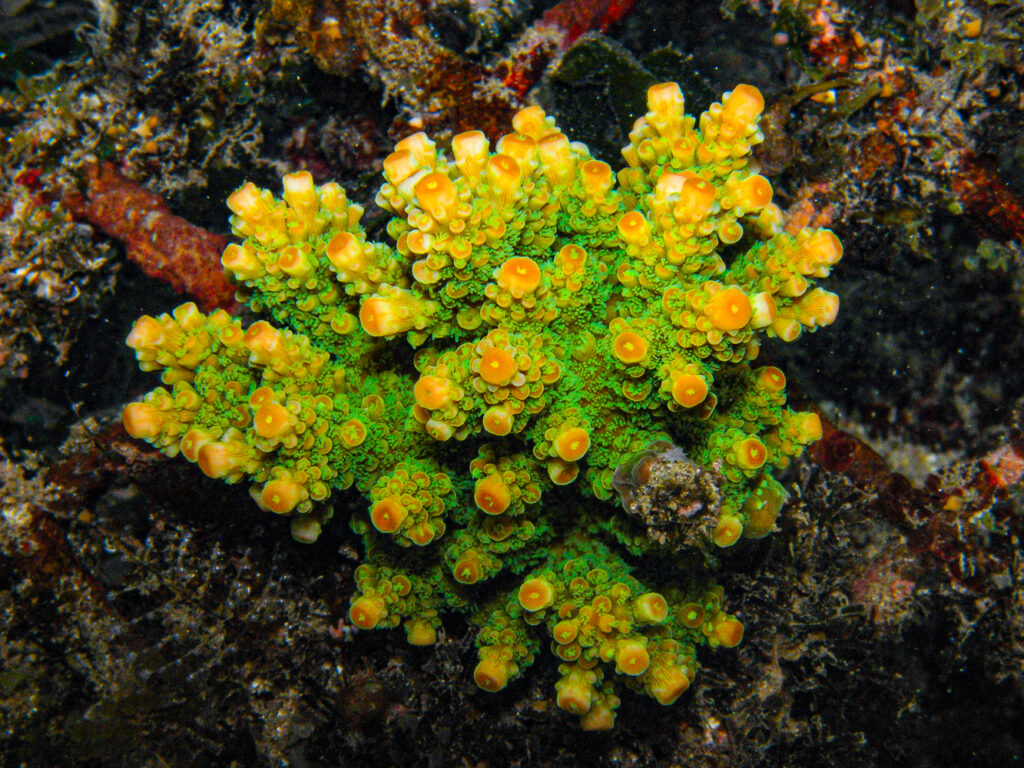
I’m aware that Australian scientists are working to break up this “Acropora florida” species complex into half a dozen species. I’m excited and will keep you posted when the publication is finally out.
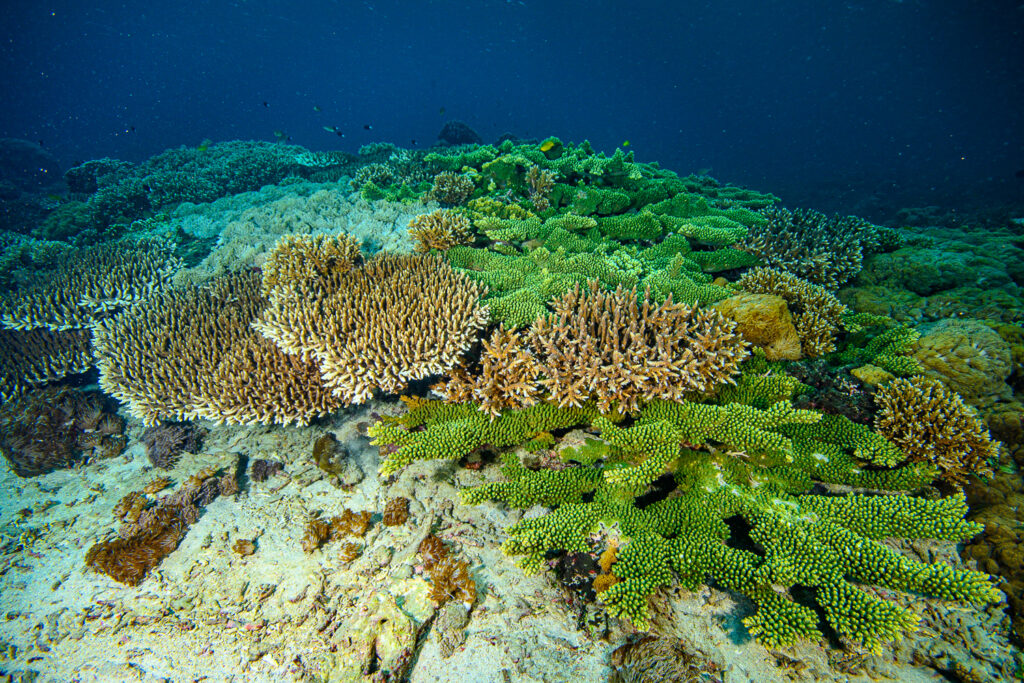
Still, even with a full life dedicated to the observation of this fascinating genus of corals, I feel I’ve yet to even get just a small glimpse of their total nature.

